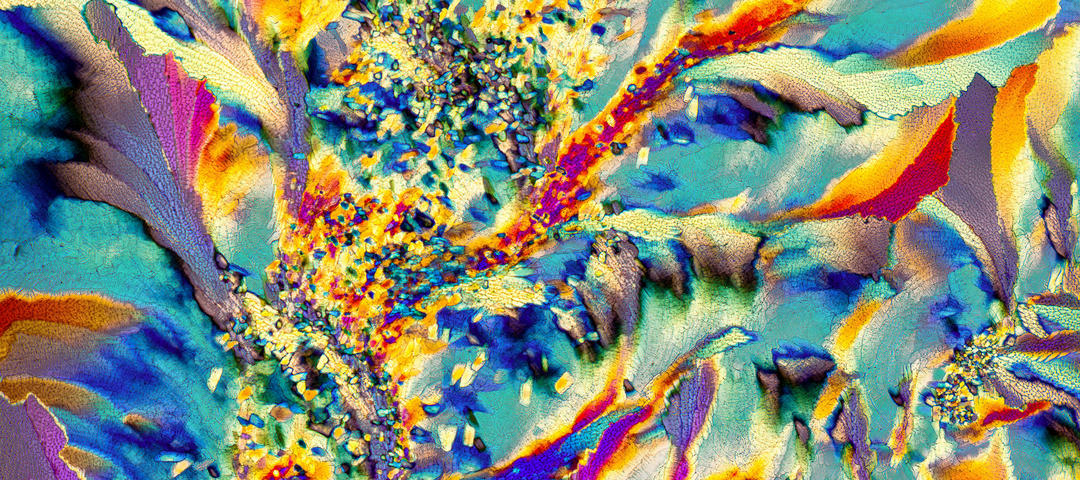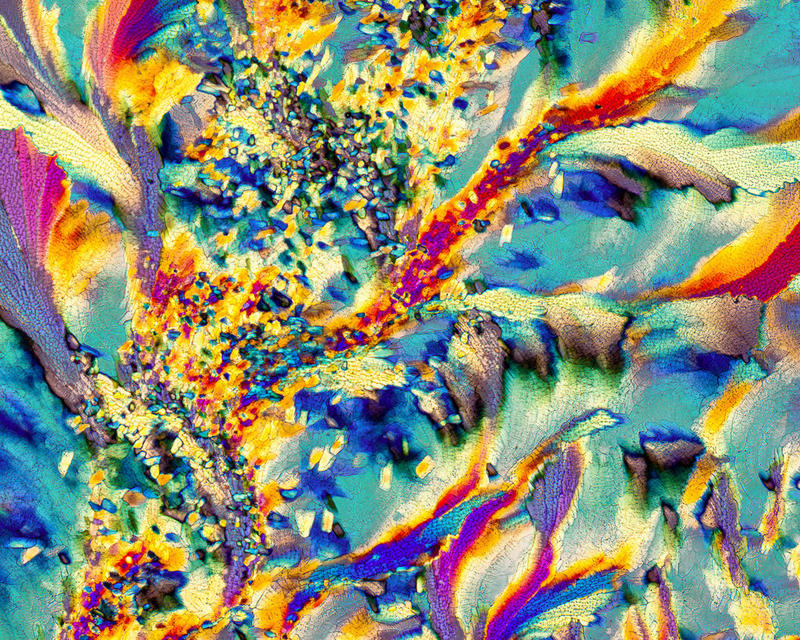The new artwork for our No.3 Gin is remarkable. Created by New York-based artist Justin Zoll, it quite literally puts No.3 under the microscope
Kaleidoscopic, intense and abstract, the No.3 artwork is dazzling – and there’s more to it than meets the eye. For this remarkable series of images, photographer Justin Zoll – who specialises in “micro landscapes” – put magnified crystals of our gin under his lens.
“There were a number of hurdles to overcome in the making of these images,” Zoll explains. “For some components of No.3 Gin, my usual processes worked; for most, they did not.” The first step in Zoll’s method is usually to work out how to crystallise the substance he’s working with. For gin, this meant freezing it. As anyone who keeps a bottle tucked in the freezer knows, this is no easy task.
“Photographing frozen samples is hard enough; getting samples full of alcohol is even harder,” he says. “To solve this problem, I constructed a water-cooled system which uses thermoelectric devices to reach very low temperatures.
“Tougher still was actually photographing these now-frozen liquids. As soon as I removed a slide from the cooling device, it began to melt and the crystals lost their form and beauty. So I set my microscope and the cooling rig up outside on my porch, where the temperature was cooler at night.
“Even outside in these cold temperatures, placing the slide directly on the microscope stage resulted in a pretty rapid melting. To overcome this, I made a thermal-isolation slide with two glass slides separated by insulating fiberglass fabric. By placing my sample slide on top of this heat transfer barrier, I was able to spend more time photographing each one.”
Zoll used an old Olympus BH2 microscope and his Canon 5DMKIII to capture the images. He used magnification of between 40 and 50x to get the stunning details of the crystals. The intense colours you can see come from two polarising filters.
“The structure of the crystal determines the colours these filters can lend. By rotating the filters with respect to each other I can modify the colours to some degree but, ultimately, the colours are a product of physics and most certainly not just a digital addition,” explains Zoll.
For Zoll, this project was a truly fitting way to show off the essence of No.3 Gin. “By photographing samples of gin and its components on a microscopic scale, in their purest form, irreducible without losing their character, we have been able to illustrate this spirit of purity,” he explains.
Despite the challenges of getting No.3 under the microscope, Zoll’s efforts have produced a series of images which are truly unique. You’ll never look at a G&T in quite the same way again.




